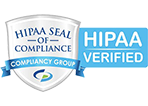6 Tips to Help Maximize Your Physical Therapy Progress
Physical therapy can be a very effective way to recover from an injury, but it requires a lot of time and effort on your part. It’s not enough to simply show up to your appointments; you need to be proactive in your recovery to see the best results. While it can be challenging to stay motivated and committed, there are ways to speed your recovery and make the most of each physical therapy session. Here are our top 6 tips to help you maximize your physical therapy progress.
1. Stay Consistent
Consistency is key when it comes to physical therapy. Make sure you follow your therapist’s prescribed exercise regimen at home. Missing sessions or taking too many days off in between sessions can negatively affect your progress.
2. Communicate with Your Therapist
It’s important that you communicate with your physical therapist throughout your recovery process. They can adjust your therapy sessions if necessary, give you tips and advice regarding what you can do at home, and answer any questions you may have.
Also, remember to always be honest with your therapist. If you’re experiencing pain or have difficulty with a particular exercise, let them know. Your therapist can adjust your treatment plan or modify your exercises to help you progress at a pace that is comfortable and safe for you.
3. Incorporate Other Forms of Exercise (If Possible)
While physical therapy is your main focus, incorporating other forms of exercise can help speed up your recovery. Cardio exercises are great for improving heart health, and strength training exercises can help increase muscle strength. Before incorporating new exercises into your routine, check with your physical therapist to determine if they’re right for you at your particular stage of recovery.
4. Follow a Healthy Diet
Proper nutrition can do wonders for your physical therapy progress. While you may be focused on your exercises and stretches, an unhealthy diet can negatively impact your body’s ability to recover. Be sure to include plenty of fruits, vegetables, and lean proteins in your diet.
5. Stay Hydrated
Water is crucial to the healing process. Drinking enough water can help eliminate toxins from your body and flush out inflammation that may be hindering your recovery.
6. Ask Questions
Physical therapy can be overwhelming, and it’s common to have questions. Don’t be afraid to ask your therapist for more information about your condition, treatment plan, or exercises. Understanding the reasons behind certain exercises or techniques can help you progress more quickly and stay motivated.
Take the First Stride Toward a Healthier, Pain-Free Life
If you’ve been injured or undergone surgery, physical therapy is a critical part of the healing process, but it can be challenging and even cause moments of discomfort. But, with the help of Impact Medical Group of Tampa, you don’t have to face these hurdles alone. Our dedicated team is committed to providing unwavering support, care, and compassion as you embark on your physical therapy and recovery journey. Call us today at (813) 283-1910 to schedule your free medical evaluation.
